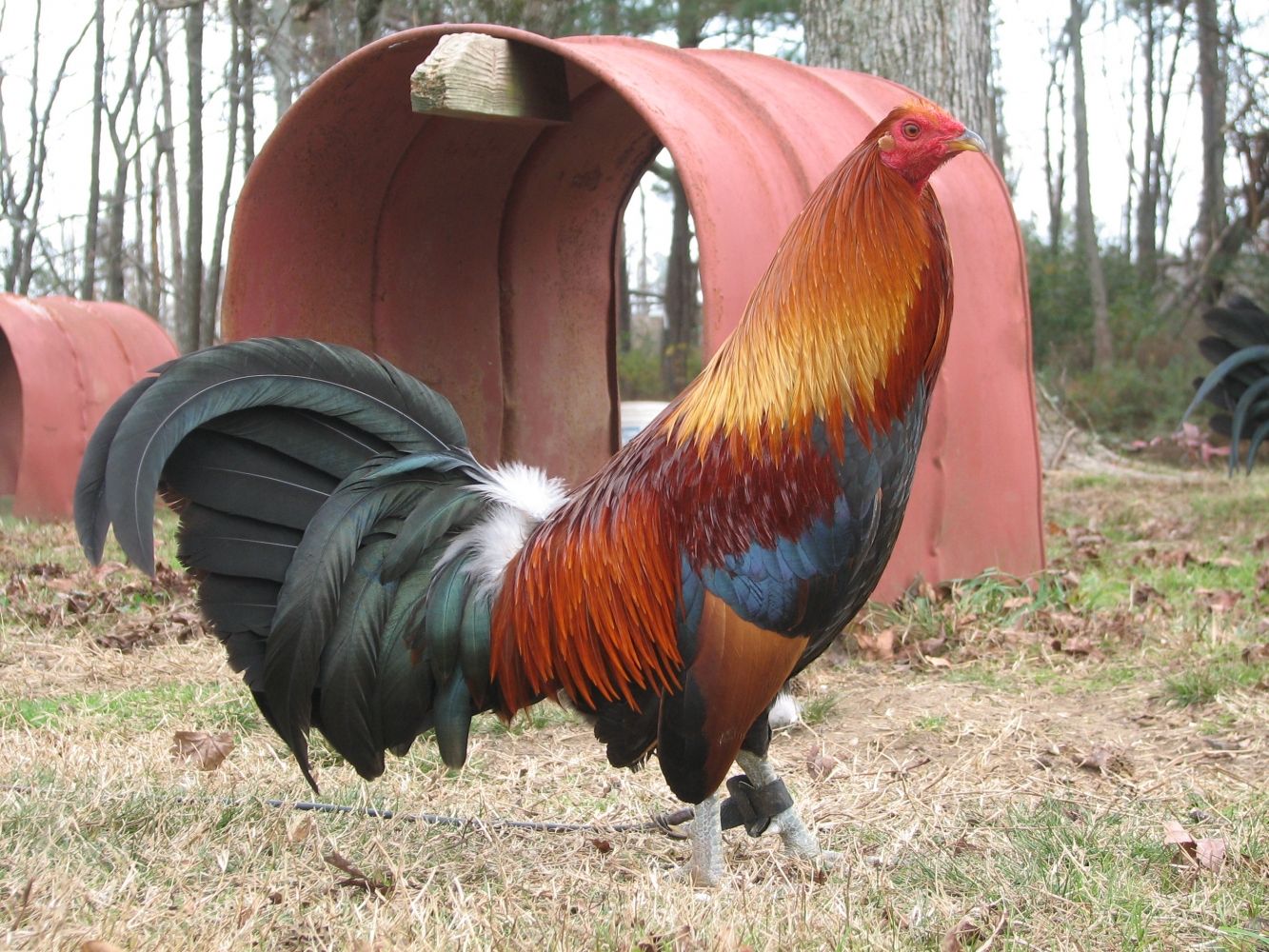Are you a fan of gamefowl and curious about the Blueface Hatch breed? Look no further as we delve into the rich history and unique fighting style of these magnificent birds. The Blueface Hatch is one of the most sought-after breeds in the gamefowl world, revered for its strength, agility, and tenacity in the ring. From its origins to its distinctive characteristics in battle, join us on this journey to discover all things Blueface Hatch.

Blueface Hatch History and Origin
In the early 1940s, the team of J.D. Perry and Karl Bashara had the best gamefowl, the Shufflers, at all the Oklahoma Pits. As soon as C.C. Cooke and E.W. Law hired J.D. to run their farm, he crossed Cooke’s Hatch with Law’s Clarets and created the now-famous Hatch-Clarets, which became unbeatable in heel battles. With the Hatch-Claret blend, power and speed became the standard for gamefowl.
During that time, Max Thaggard bred a Gray cock with one eye over some brown-red hens, producing the Vibrators, the greatest infighters (cutting to the breast). Both the Hatch-Clarets and the Vibrators were unbeatable. Sweater McGinnis lost too many to these fowl, so he bred a better match for them. With both Hatch-Clarets AND Gray-Brown Reds, Sweater began to dominate the field.
At that time, Lun Gilmore, McGinnis’ friend, had a sickly-looking, pale-headed old buff hen that looked like she was headed for someone’s dinner table, except she had bred really good fighters for Ted McLean. Like most McClean fowl, she had Morgan Whitehackle blood. McLean requested the Hatch cock to mate with this old hen.
When Frost sparred the small rooster, they realized it could pack a wallop for such a tiny runt. Ted sent the bird rather than one of his best birds, a pea comb Hatch throwaway. The southern cockers bred him to the old pale-headed hen, who raised about 20 chicks and fought the stags with mediocre success.
Sweater took this “Old Blueface” cock to mat with some hens of Madigan Gray and Leiper Hatch when he sparred. He didn’t like the “damned blue-faced chickens,” but he never gave up on them. He checked with poultry experts at Texas A&M College to see what was wrong. After testing, they told him the chickens were perfectly healthy. (The blue face is a genetic trait from the Brown Red and Black Sid Taylor)
Sweater and J.D. traded some Hatch fowl, and J.D. advertised Blueface for sale in 1958.
Trying various crosses with those “damned blue face chickens,” Sweater found that mixing Karl Bashara’s Shufflers with his other lines developed the Blueface as we know it today.
Blueface Gamefowl Fighting Style
The Blueface Hatch Fighting Style is characterized by its quickness and aggression. These birds have an impeccable sense of timing and use it to launch lightning-fast attacks on their opponents. They also possess incredible endurance that allows them to keep going even after taking heavy blows from their adversaries.
In the ring, Blueface Hatches are known to be intelligent fighters who can adapt quickly to different situations. They are excellent at reading their opponents’ moves and reacting accordingly, making them tough opponents that require a skilled fighter to overcome.
When it comes down to it, there is no doubt that the Blueface Hatch gamefowl is one of the most impressive fighting breeds out there today. With its rich history and reputation for excellence in the ring, this breed remains popular among both novice breeders and seasoned professionals alike.
Whether you’re looking to raise these birds for competition or want a unique addition to your backyard flock, Blueface Hatches will surely not disappoint!
See Also:
- Johnnie Jumper Gamefowls: Anything You Need To Know
- Dom (Bulik) Gamefowl Breed Profile
- Allen Roundhead Gamefowl History and Fighting Style
- Red Quill Gamefowl History, Fighting Style, and More
- Radio Gamefowl Bloodline Profile and Fighting Style
